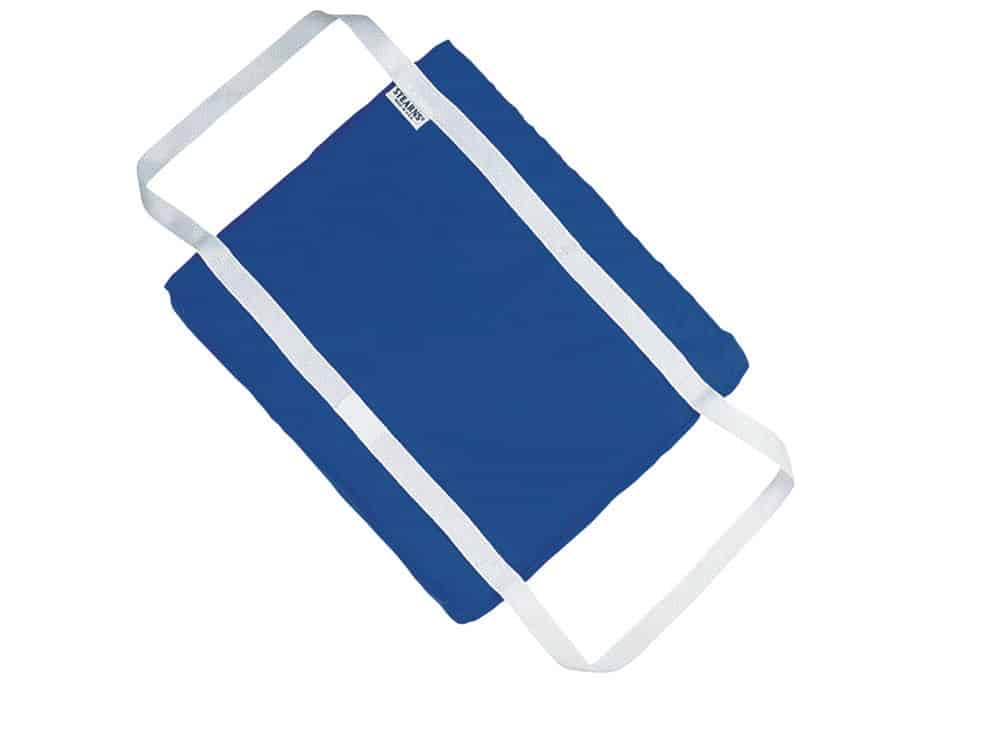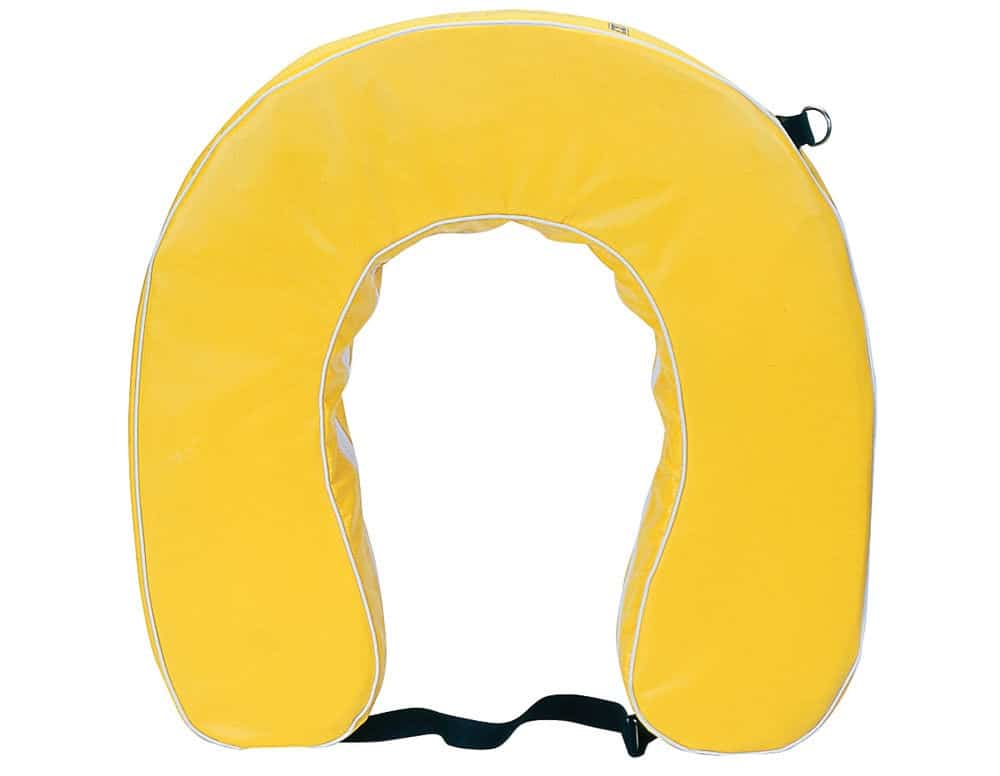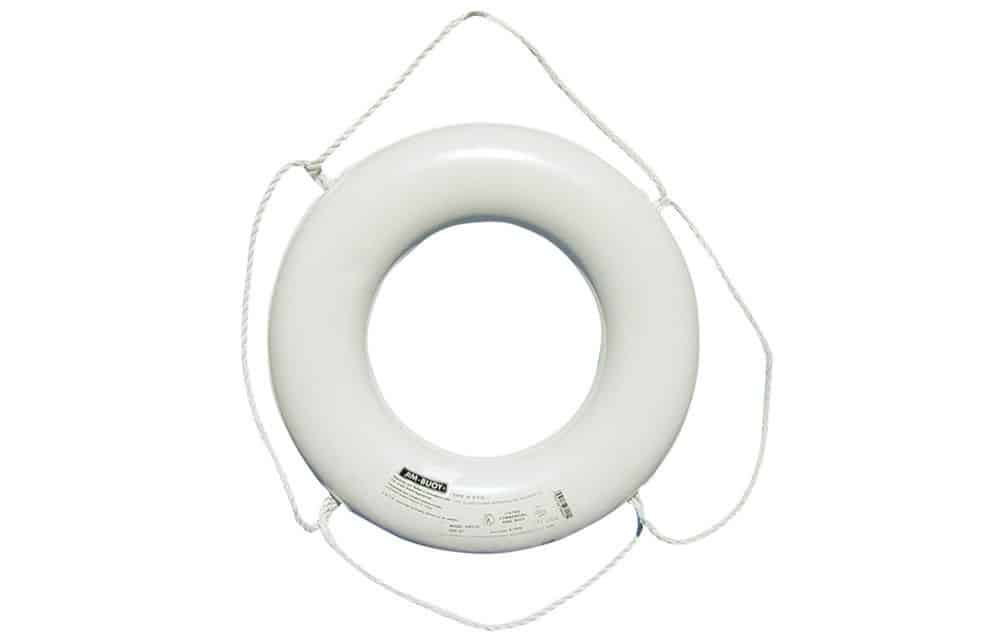
Stearns Flotation Cushion
The Float: More than a comfortable cushion to sit on during a cruise, the Stearns flotation cushion measures 16½ by 14 inches and can provide valuable supplemental flotation during a man-overboard situation until help arrives. The cushion’s shell is made of 200-denier nylon, and it has an Aquafoam PVC foam core.
The Sink: It may not float all adults on its own, and a larger person might not be able to get his or her arms through the straps to be able to hold it in a hugging position.
$17.99; stearnsflotation.com

Cal June Type IV Horseshoe
The Float: A more serious lifesaving device than a flotation cushion, the horseshoe is designed to be secured to a boat’s rail so it can quickly be thrown to a victim in the water. The regular horseshoe from Cal June has 50 pounds of buoyancy and is made with closed-cell foam wrapped in a vinyl-coated fabric for durability.
The Sink: It’s the most expensive Type IV on the market, and you can’t use it for anything else, such as a cushion. Also, you need to buy a mounting bracket for it.
$119.99; jimbuoy.com

Cal June Throwable Life Ring
The Float: An adult can probably throw this device farther than the other two because of its rigid design and circular, Frisbee-like shape. The urethane foam core is wrapped in vinyl-coated nylon, and the ring has webbing straps so the person in the water has something to grasp. The grab line passes through the webbing. It provides 19 pounds of buoyancy.
The Sink: It’s hard, so you don’t want to try using it as a cushion, and it could actually hurt if you hit a person with it when you throw it.
$67.99 for the 19-inch diameter; jimbuoy.com
A Type IV personal flotation device (PFD) is one of the most underrated pieces of safety equipment on your boat. It’s often the first accessory deployed in a man-overboard situation, so take a look at these three choices.
* * * * *
The U.S. Coast Guard is asking all boat owners and operators to help reduce fatalities, injuries, property damage, and associated healthcare costs related to recreational boating accidents by taking personal responsibility for their own safety and the safety of their passengers. Essential steps include: wearing a life jacket at all times and requiring passengers to do the same; never boating under the influence (BUI); successfully completing a boating safety course; and getting a Vessel Safety Check (VSC) annually from local U.S. Coast Guard Auxiliary, United States Power Squadrons(r), or your state boating agency’s Vessel Examiners. The U.S. Coast Guard reminds all boaters to “Boat Responsibly!” For more tips on boating safety, visit www.uscgboating.org.








